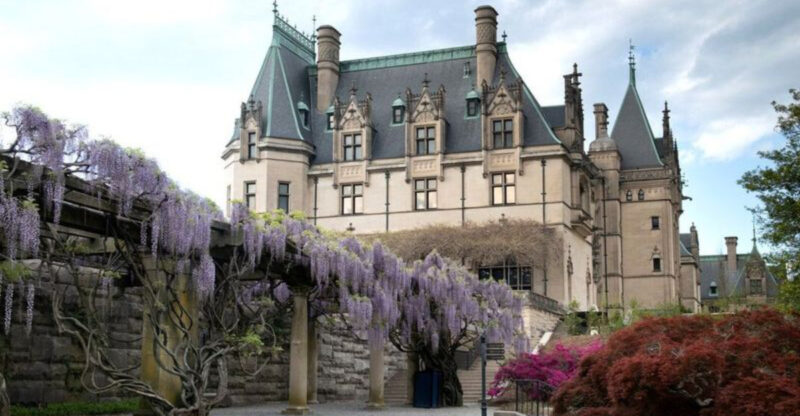Where Coal Once Ruled, Central Appalachia Welcomes Thriving Elk Populations

Picture this: massive elk herds roaming freely across lands that once echoed with mining machinery. Central Appalachia has pulled off something incredible, transforming old coal country into a wildlife paradise!
These majestic creatures are making a comeback that’s turning heads and bringing new life to communities that desperately needed it. Get ready to discover how nature found a way to heal, and why this story matters more than you might think!
Elk Vanished Over 150 Years Ago
Way back in the 1800s, elk completely disappeared from Appalachia. Hunters went after them relentlessly, and their forest homes kept shrinking. By the mid-1800s, not a single elk remained in these mountains.
It seemed like elk would never return to this region again. Local folks only heard stories from their great-grandparents about these magnificent animals. Nobody imagined they’d ever see elk grazing in their backyards!
Losing elk meant losing an important piece of the ecosystem. The mountains felt emptier without their bugling calls echoing through valleys.
Kentucky Led The Comeback Charge
In 1997, Kentucky decided to do something bold and amazing. They brought 1,541 elk from six western states over five years. This wasn’t just tossing animals into the wild, it required careful planning and serious dedication!
Wildlife experts worked tirelessly to ensure elk would survive and thrive. They chose release sites carefully, monitored the animals constantly, and adjusted strategies when needed. Kentucky’s gamble paid off spectacularly.
Today, this project ranks among America’s greatest wildlife restoration success stories. Other states watched Kentucky’s progress with hopeful eyes.
Over 10,000 Elk Now Roam Kentucky
Kentucky’s elk population has absolutely exploded in the best way possible! From those initial 1,541 animals, the herd now exceeds 10,000 strong. That’s the largest elk population east of the Rocky Mountains!
These numbers prove that elk found exactly what they needed here. Food, shelter, and safety allowed them to multiply rapidly. Biologists celebrate this as a conservation miracle.
Neighboring states like Virginia, Tennessee, and West Virginia also established smaller herds. The success keeps spreading across Appalachia, bringing elk back to their ancestral homeland.
Old Mine Lands Became Perfect Elk Habitat
Here’s something wild: those controversial mining sites actually helped elk! Mountaintop removal created open grasslands perfect for grazing. Elk love having both meadows and nearby forests for shelter.
Reclaimed mine lands offer exactly what elk need to flourish. They munch on grasses in the open areas during the day. When they need rest or protection from weather, forests provide cozy cover.
Nature found opportunity in an unexpected place. What once symbolized environmental destruction now supports thriving wildlife populations. It’s a silver lining nobody saw coming!
Elk Keep Ecosystems Healthy And Balanced
Elk aren’t just pretty faces, they’re ecosystem engineers! Their grazing habits prevent plants from taking over everything. By munching selectively, they create space for diverse plant species to grow.
This plant diversity attracts songbirds, butterflies, and small mammals. Everything connects in nature’s web. When elk thrive, countless other creatures benefit too.
Scientists noticed increased biodiversity wherever elk populations established themselves. These animals help maintain the delicate balance that makes forests healthy. Their presence ripples through the entire ecosystem positively!
Elk Tourism Brings Money To Communities
When coal jobs disappeared, communities struggled financially. Then elk arrived and changed everything! Visitors now flock to Appalachia for elk viewing and photography. Hotels, restaurants, and tour guides suddenly found new business opportunities.
Breaks Interstate Park in Virginia attracts thousands of elk enthusiasts annually. People pay for guided tours, buy local crafts, and stay in nearby towns. This eco-tourism generates serious income.
Former coal towns discovered a renewable resource that won’t run out. Elk keep reproducing, and tourists keep coming!
Hunting Programs Manage Population Growth
With elk numbers soaring, smart management became essential. Kentucky created a permit lottery system for regulated hunting. This keeps populations at healthy, sustainable levels without damaging the herd.
Hunters apply for limited permits each year through a fair lottery. Winners get the chance to hunt while contributing to conservation funding. It’s a win-win situation for everyone involved.
This approach balances nature’s needs with human recreation. Too many elk could damage habitats, so controlled hunting maintains perfect equilibrium. Conservation and hunting work together harmoniously!
Communities Embraced Elk As Symbols Of Hope
Locals didn’t just tolerate elk, they fell in love with them! These animals represent resilience and renewal after tough economic times. Communities organize festivals, create elk-themed art, and share stories about sightings.
Southern Gap Outdoor Adventure in Virginia offers guided tours and educational programs. Residents work as guides, sharing their knowledge and passion with visitors. Elk brought communities together around a common source of pride.
Children grow up seeing elk regularly, connecting them to nature in meaningful ways. It’s healing for hearts and landscapes alike!
Conservation Groups Made It All Possible
Elk didn’t bounce back by accident, dedicated people made it happen! State wildlife agencies partnered with conservation organizations and local communities. The Nature Conservancy’s Cumberland Forest Project protected critical habitats across Kentucky, Tennessee, and Virginia.
These partnerships pooled resources, expertise, and funding. Nobody could’ve succeeded alone, but together they accomplished the impossible. Collaboration proved absolutely essential.
Conservation groups continue monitoring elk populations and protecting habitats. Their ongoing commitment ensures elk will thrive for generations. Teamwork truly makes the dream work!
Challenges Still Exist Despite Success
Success brings new problems to solve! Managing human-wildlife interactions requires constant attention. Sometimes elk wander into yards or cross highways, creating safety concerns. Ensuring habitat sustainability also demands ongoing effort.
Researchers study elk behavior, health, and environmental impact continuously. They adjust management strategies based on what they learn. Science guides every decision to protect both elk and people.
Adaptive management means staying flexible and responsive. As conditions change, strategies evolve accordingly. The work never truly ends, but the results make it worthwhile!
Elk Became Cultural Icons Of Appalachia
Elk transformed from extinct animals into beloved cultural symbols! Artists paint them, festivals celebrate them, and stories spread about encounters. They represent Appalachia’s natural heritage and the region’s ability to bounce back from hardship.
During autumn, their bugling calls echo through mountains like nature’s trumpet. Hearing that sound reminds people that wild places still exist. Elk connect modern Appalachians to their ancestors’ experiences.
This cultural renaissance extends beyond wildlife appreciation. It’s about regional identity, pride, and hope for the future!
The Future Looks Bright For Appalachian Elk
Every spring brings adorable elk calves into the world! Populations remain stable and healthy, with excellent genetic diversity. Habitat protection continues expanding, giving elk more room to roam.
Young people in Appalachia grow up with elk as normal neighbors. This generation will protect these animals because they’ve always known them. Education programs ensure conservation values get passed down.
The elk comeback story isn’t finished, it’s still being written! Each year brings new opportunities for growth, learning, and celebration. Appalachia’s wild heart beats stronger than ever!






